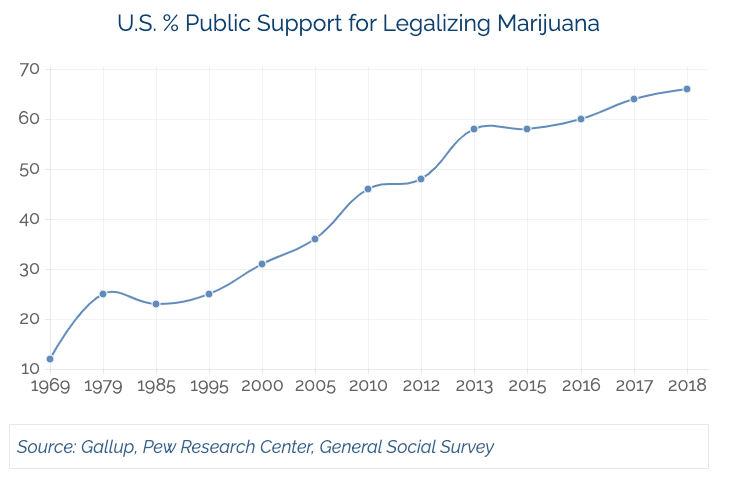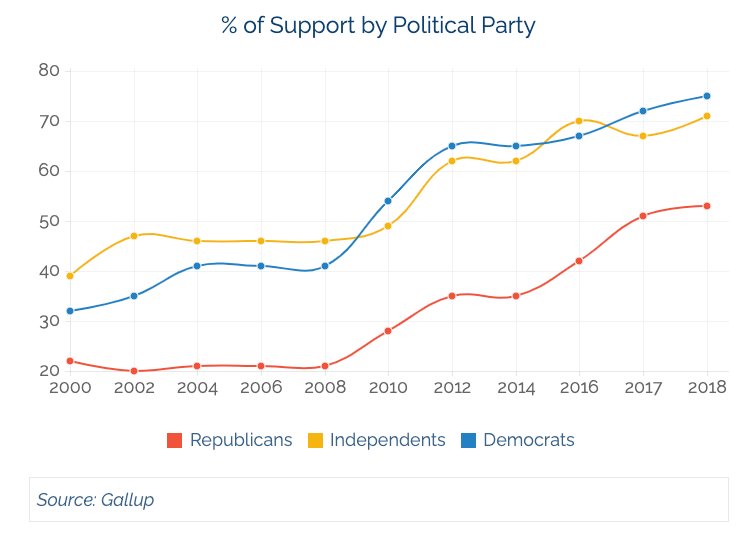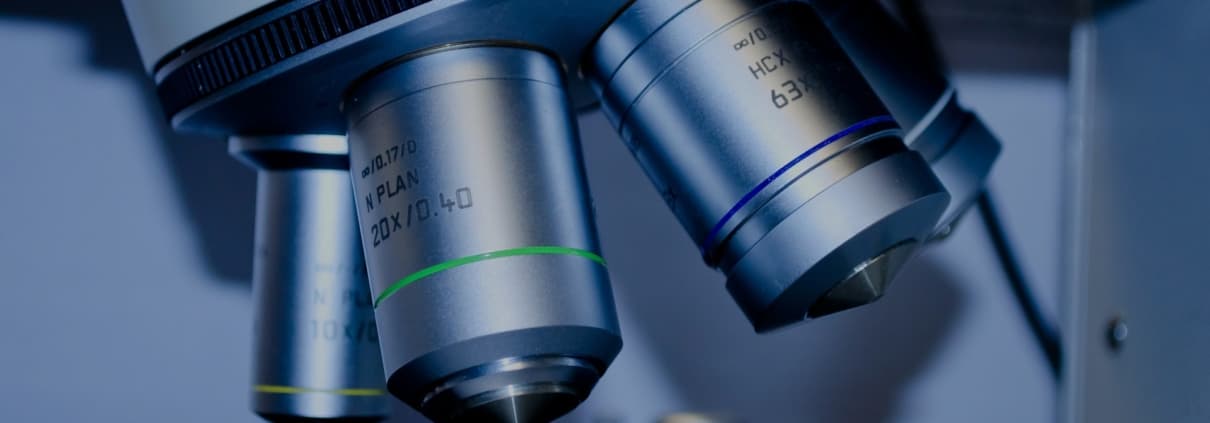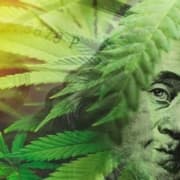Cannabis Reform: Momentum & Roadblocks
Cannabis Reform Today
Cannabis legislative reform continues to show great traction. Within the last year:
- Oklahoma legalized medical cannabis (Jun-2018);
- Epidolex became the first cannabis-derived medicine to be approved by the FDA and subsequently rescheduled by the DEA (Sep-2018);
- Canada became the first G7 nation to legalize adult-use cannabis federally (Oct-2018);
- Michigan legalized adult-use cannabis, and Utah & Missouri legalized medical cannabis (Nov-2018);
- The 2018 Farm Bill was signed into law, legalizing the hemp industry nationally (Dec-2018);
- The SAFE Banking Act was introduced to the US Senate, aimed at protecting financial institutions who bank cannabis businesses (Apr-2019); &
- Illinois legalized adult-use cannabis, becoming the 11th state and 2nd largest by population to do so (Jun-2019).
Yet despite these positive developments, reform should be moving faster. So why isn’t it? Contrary to what many outside of the industry believe, cannabis legalization is no longer a red/blue issue. Approximately two-thirds of Americans now support cannabis legalization, including a majority of Republicans. Additionally, 93% of Americans support the use of medical cannabis if prescribed by a doctor.
U.S. % Public Support for Legalizing Marijuana


In conjunction with this increasing level of popular support, prominent political figures on both side of the aisle have come out in support of cannabis legalization:
- “This is one of the most exciting opportunities you’ll ever be part of,” – John A. Boeher, R. Former Speaker of the House.
- “Legalizing marijuana is a step forward in reforming our broken criminal justice system,” – J.B. Pritzker, D. Governor of Illinois.
- “At a time when farm income is down and growers are struggling, industrial hemp is a bright spot of agriculture’s future,” – Mitch McConnell, R. Senate Majority Leader.
- “If we talk about criminal justice reform, we need to start with the things we make illegal. One of the best places we could start with is the legalization of marijuana,” – Elizabeth Warren, D. Senator of Massachusetts.
Despite the positive momentum, cannabis legalization efforts continue to face two significant roadblocks: (i) marijuana’s classification as a Schedule I substance makes medical research extremely difficult and (ii) big pharma spends substantial lobbying dollars against cannabis legalization due to their own economic interests.
Medical Marijuana Research
The FDA has stated they have no issue with approving cannabis-derived medication so long as it is done using proper research. While this is a logical requirement at first glance, bureaucratic red tape makes actually conducting research extremely difficult. FDA approval for new drugs begins with companies submitting Investigational New Drug Reports for clinical trial. The FDA then has 60 days to review and approve the trial. However, marijuana’s status as federally illegal substance makes clinical trials extremely difficult to conduct, hence removing any possibility of FDA review and approval.
The issue arises by marijuana’s classification as a Schedule I substance by the DEA, meaning it has, “no currently accepted medical use and a high potential for abuse”. The current scheduling implies marijuana has a higher potential for abuse than Schedule II substances including methamphetamines, oxycodone, and cocaine – which is ranked as the second most addictive drugs and the third most damaging.
On top of that, the US Department of Health and Human Services currently holds patent 6630507, which recognizes that cannabinoids have “particular applications” in preventing neurological brain damage after trauma, treating neurodegenerative diseases like Alzheimer’s, and treating autoimmune diseases. The same government that holds this patent classifies marijuana as a substance with “no currently accepted medical use,” showing the obvious contradictions in the DEA’s current scheduling.
“What we learned when making Weed the People, our documentary about children with cancer who use cannabis as part of their treatment plan, is that cannabis challenges our notions of what defines a drug versus a medicine. We all have the right to access natural medicines that are potentially life-saving. These are basic human rights that institutions should not have the power to take away. ”
(II) Big Pharma Lobbying Efforts
In addition to difficulties in conducting medical research, cannabis reform efforts also face significant impediments caused by big pharma’s anti-marijuana lobbying efforts. The pharmaceutical industry spends more money on lobbying than any other industry, over $2.6bn between 1998 and 2012. Much of this spend has been for anti-marijuana lobbying, as analysts estimate big pharma stands to lose $18.5bn if medical marijuana becomes legal in all fifty states. This loss in revenues would be caused by substantially lower opioid and prescription painkiller sales, as medical marijuana has been proven to relieve pain disorders. In states where medical marijuana is legal, there has a been a c. 25% decrease in fatal opioid overdoes. Further, just 6% of total funding for cannabis research goes to finding its benefits, while the other 94% of spend goes towards researching harmful effects[1].
How Did we Get Here?
The story is even worse when we look back at why cannabis was made illegal in the first place. In 1937, the Marijuana Tax Act was signed into law. The Act imposed such heavy restrictions that it effectively outlawed cannabis. Much of the political support for the Act was garnered by Harry Anslinger, the Director of the US Treasury Department’s Federal Bureau of Narcotics. In 1933, Anslinger launched a national campaign assailing the evils of marijuana, asserting a racist & unjustified correlations between marijuana and murder, mayhem, Mexicans, African Americans, jazz and sex[2]. This culminated in his testimony to Congress in support of the Marijuana Tax Act, during which he made statements such as: “There are 100,000 total marijuana smokers in the U.S., and most are Negroes, Mexicans, Filipinos and entertainers. Their Satanic music, jazz and swing, result from marijuana usage. This marijuana causes White women to seek sexual relations with Negroes, entertainers and any others.”
Strong circumstantial evidence shows that Anslinger efforts’ received support from DuPont and William Randolph Hearst, as both the petrochemical and paper industries stood to lose substantial money to industrial hemp. However, one important group came out in strong opposition to the Act. In 1937, the American Medical Association (AMA) testified to the House Ways & Means Committee. There were 28 patent medicines containing medical cannabis on the market in 1937 and no problems with cannabis were known to the AMA[2]. Their spokesman, Dr. William Woodward, stated in his testimony, “The AMA knows of no evidence that marijuana is a dangerous drug”. He went further to state, “We cannot understand yet, Mr. Chairman, why the bill should have been prepared in secret for two years without any intimation, even to the profession, that it was being prepared”.
Unfortunately, when the discussion was brought to the full floor of the House of Representatives, only one question was asked regarding the medical community: “Did anyone consult with the AMA and get their opinion?”. Representative Fred Vinson of Kentucky turned Dr. Woodward’s testimony upside down, replying, “the AMA are in complete agreement”, helping to secure the passage of the Marijuana Tax Act. Subsequently, marijuana was made a Schedule I substance in the 1970’s as part of the Controlled Substances Act, despite the recommendation of Nixon’s appointed commission. The CSA led to the incarceration of millions of Americans, disproportionately African Americans despite similar rates of consumption as whites, for simply possessing marijuana and effectively halted cannabis research.
Where do we go Next?
Prior to 1937, cannabis had been used as a therapeutic agent across many cultures for 5,000 years. While legal cannabis is new to our society, the time period where cannabis has been illegal is in fact the anomaly, not the norm. While America’s history of cannabis legislation is bleak, the increasing wave of popular support is helping to correct for past injustices. Outside of providing your support for cannabis reform at the ballot box, we encourage your support of organizations including NORML, the Cannabis Trade Federation, the UCLA Cannabis Research Initiative and Weed the People. Together, we can end the injustices caused over the last 80+ years in support of criminal justice reform and efficacious medication for patients.
[1] Weed the People. Directed by Abby Epstein. Mangurama and Bobb Films, 2018.
[2] Bearman, David M.D. Drugs are not the Devil’s Tools – The History of Drugs: Discrimination, Greed, the War on Drugs and why Medical Marijuana can Fuel Change. Santa Barbara: Blue Point Books, 2017. Print.
DISCLAIMERS: This site is not intended to provide any investment, financial, legal, regulatory, accounting, tax or similar advice, and nothing on this site should be construed as a recommendation by Key Investment Partners LLC, its affiliates, or any third party, to acquire or dispose of any investment or security, or to engage in any investment strategy or transaction. An investment in any strategy involves a high degree of risk and there is always the possibility of loss, including the loss of principal. Nothing in this site may be considered as an offer or solicitation to purchase or sell securities or other services.









